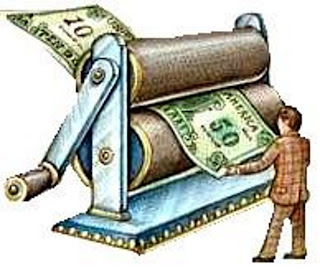Forecasts based on social outcomes are an 'iffy' thing because of the enormous amount of exogenous variables.
This particular forecast made some time ago is important, not because this professor may be more right or wrong than any other 'soft forecaster,' but because a signficant portion of America's major creditors, those outside the US, hear this and find it to be credible.
Professor Igor Panarin, whose book The Crash of America is just out, now claims that by November the book will be yesterdays news because the events described in it will have alrady come to pass.
We are not so gloomy or certain in our own outlook, and tend to discount the statements made by authors on book tours. But we do find ourselves drawn to the example of the financial decline of the Soviet Union as more probable for the US than other possible outcomes, such as the lingering malaise of Japan. It would be ironic and instructive if both Cold War behemoths eventually foundered after their many years of epic effort and wasted spending on their military complexes and regional wars.
It has never been more apparent that Obama must show leadership, or like his predecessor Mr. Bush, must find a galvanizing event to bring a badly needed focus to his presidency. One can see his Administration reaching for that one issue to distract from the awful financial problems: health care reform, swine flu preparations, whatever might bring some focus on action to a majority party in disarray with a rookie at the helm.
They had their opportunity with the financial crisis, but were hopelessly put off track by hidden scandal, conflicts of interest, a corrupt campaign contributions process, and of course, too many chiefs of inadequate stature who tended to pull down and smother the seasoned leaders able to have a vision and implement it such as Paul Volcker.
Robert Reich presented a nice apologia for the Democrats on Health Care Reform the other day, and it was credible. He is one of the few members of the Clinton Administration for whom we have enduring respect for his intelligence and integrity. Why he has no position in the current Administration is puzzling indeed.
The problem is that such internal diffusion absolutely cries out for a leader like a Franklin Roosevelt to bring some energy and action to the diversity of ideas.
A scary thought perhaps, given the weighting of alumni of the Clintons and Wall Street in this Administration, absolutely marked by a lack of 'outsiders.'
Obama is approaching his administration like a community organizer, trying to build consensus and look for 'local' leaders to take up the challenge when he leaves. But this is not how a leader functions in moments of crisis.
"A leader is one who knows the way, goes the way, and shows the way."Perhaps when the autumn television shows begin their debuts, the chief American idol may find his task a little less onerous as distraction and forgetfulness sets in once again at the United States of Amnesia. Wall Street is counting on it, and as only Benmosche has dared to articulate, yearns to tell the Congress, the regulators, and the public to 'shove it.' After all, its a well-established principle on the Street that you get to 'eat what you kill,' and the would be oligarchs are hungry.
John C. Maxwell















































